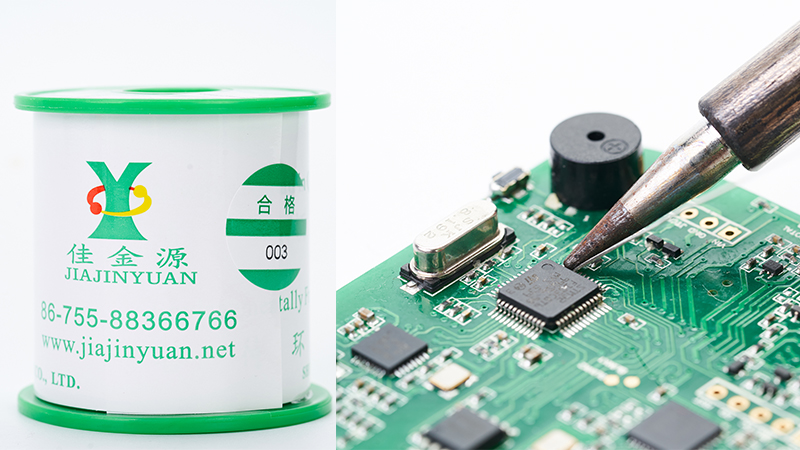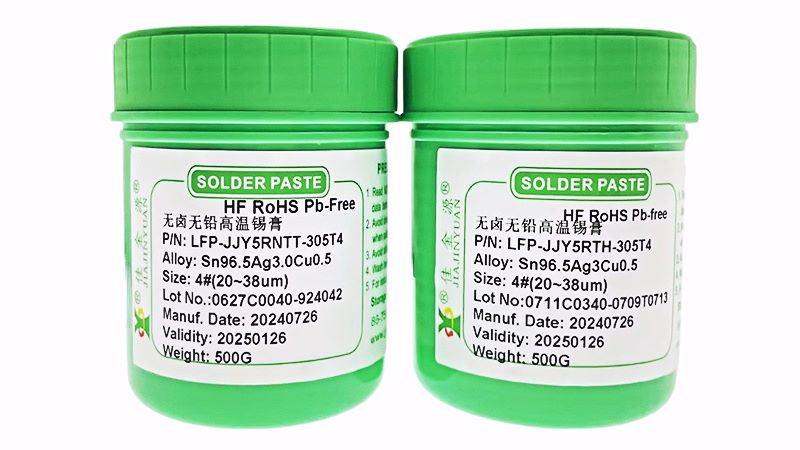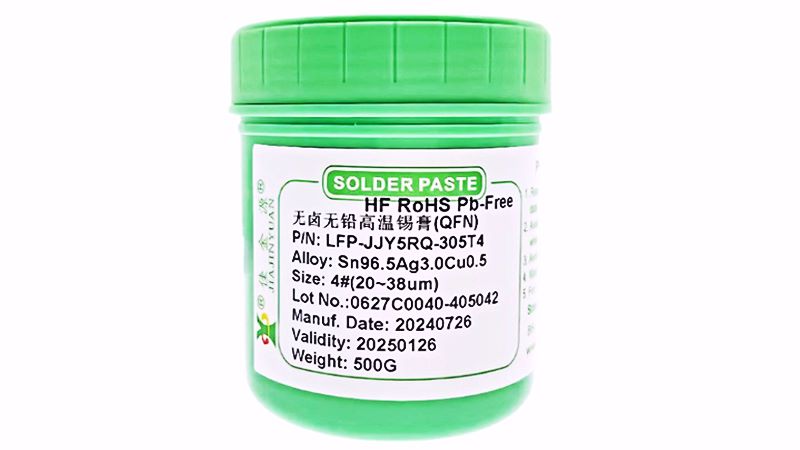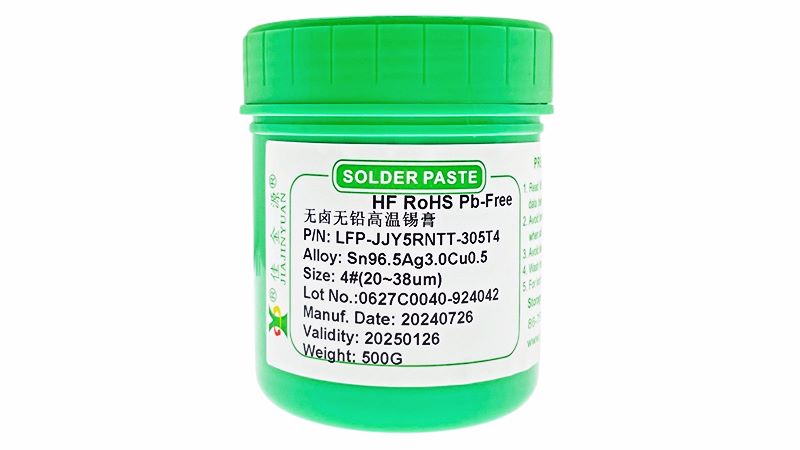Solder wireNot sticking tin during soldering is a common phenomenon when using a manual soldering iron. The main reasons for not sticking tin are twofold: one is related to the solder wire, and the other is related to the soldering iron and operation method during soldering. The following is a summary by JJY Solder Wire Factory for everyone:

1. The temperature of the soldering iron tip is set too high. If the soldering temperature of the solder wire exceeds400It is highly likely to cause the tin-bonding surface to oxidize, resulting in the inability to solder electronic components and circuit boards together or the appearance of gray solder joints. It is best to adjust the temperature of the soldering iron tip properly when performing soldering wire operations. It is recommended to use a constant-temperature soldering iron to solder the soldering wire.
Second, before using a manual soldering iron for soldering, the tip of the soldering iron was not dipped in solder. When soldering the solder wire, the entire tin-bonding surface was not fully tinned, and insufficient tin was added to the solder surface and electronic components, resulting in unstable soldering of the solder wire. It is best to train the employees before conducting solder wire welding to reduce the occurrence of poor solder joints.
Three. Using incorrect or defective cleaning methods. The sponge used to wipe the soldering iron tip is too dirty or has an excessively high sulfur content, which damages the soldering iron tip and causes the solder wire to not stick during soldering.
4. Improper operation leading to non-tin adhesion: When the working temperature exceeds350℃And stop welding more than that1When the soldering iron tip is small, if there is too little solder on it, it will not stick to the solder. On the other hand, if the soldering station is not used and there is no solder on the surface of the soldering iron tip, it will cause the soldering iron tip to oxidize rapidly and not stick to the solder. If the soldering iron tip comes into contact with organic substances such as plastic, lubricating oil or other compounds, it will not stick to tin either.
So the commonly used treatment methods are as follows: First, use a knife to scrape off the oxide layer on the tip of the soldering iron. Then, put it in a rosin box, dip it in, and then dip it in tin. That's it. However, this method cannot completely remove it. Meanwhile, if it is scraped off for a long time, the tip of the soldering iron will become thinner, affecting heat transfer, causing the temperature to drop, and even damaging the tip of the soldering iron.
Another method is: Hold the wooden handle of the soldering iron, immerse the oxidized tip of the soldering iron into a container filled with alcohol, and then1~2After taking it out in a minute, the oxide was completely and cleanfully removed, the soldering iron tip looked brand new, and it had no corrosive effect on the soldering iron tip.
V. If the above operations are carried out properly but the solder still does not stick, the elimination method should be used to determine whether it is a problem with the solder wire. The method is:
During the normal soldering process with a manual soldering iron, if the solder does not stick, you can replace it with a new roll of solder wire for soldering or pull off a section of the currently used solder wire and use the elimination method to check if it is a problem with the solder wire. Possible problems may be caused by uneven injection of rosin flux during the production process of the solder wire or the lack of a section of flux when changing the wire.
Six. Issues with the flux used during solder wire soldering can also lead to non-adhesion of solder. If the flux used is highly corrosive, it can cause rapid oxidation of the soldering iron tip, resulting in non-adhesion of solder. Using neutral and active flux and not frequently cleaning the oxide on the soldering iron tip can also lead to non-tin adhesion. When soldering solder wire, if too little flux is added, it can also lead to the situation where the solder does not stick.
It is also recommended not to use water-soluble flux as it may corrode and damage the soldering iron tip during high-temperature soldering. It is recommended to use rosin flux for soldering wire. Currently, most soldering wires are rosin type and can be directly used for soldering. When choosing flux, it is advisable to select high-quality and non-corrosive flux.
Shenzhen JJY Technology Industrial Technology Co., Ltd. is a professional solder wire manufacturer,15We have been dedicated to the research and development and production of solder wire for many years,We offer wholesale and direct supply of solder wires of different specifications. For details, please feel free to consult us.





 Tel:+86 0755 88366766
Tel:+86 0755 88366766 Phone:+86 18938660310
Phone:+86 18938660310 Email:sales@jjyhanxi.com
Email:sales@jjyhanxi.com Address:13/F,12/F, Building No. B,Qinghu Technology Park,Qingxiang Rd.,Qinghu Community, Longhua Subdistrict,Longhua District,Shenzhen City,GUANGDONG Province,P.R.C.(518027)
Address:13/F,12/F, Building No. B,Qinghu Technology Park,Qingxiang Rd.,Qinghu Community, Longhua Subdistrict,Longhua District,Shenzhen City,GUANGDONG Province,P.R.C.(518027) Guangdong Public Security Backup 44030902002666 name
Guangdong Public Security Backup 44030902002666 name
 WeChat
WeChat WeChat official account
WeChat official account
